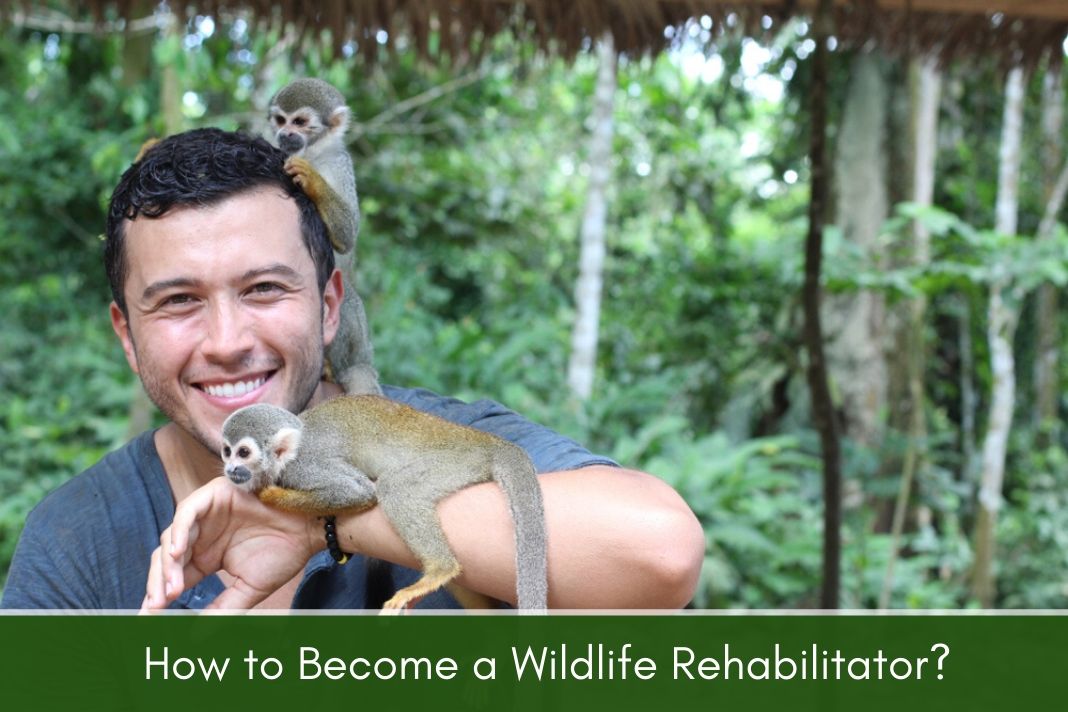
A lot of Wildlife Rehabilitation Centers are not big like the ones that you see on the nature series on T.V. Wild animals who are hurtled, or sick require care, just like some of the different animals. Wildlife rehabilitators are specialists and are responsible for the treatment and care of injured, orphaned, and banished wildlife. Know-How to become a wildlife rehabilitator.
The final goal is to return fit animals to the desolate by developing their release into suitable habitats. Few of the veterinarians specify in this type of work, but the primary group of persons is accountable for healing wild animals are wildlife rehabilitators.
How to Become a Licensed Wildlife Rehabilitator
Becoming a wildlife rehabilitator does take the longest time. You would need correctly licensed and trained to work with wild animals. However, this could be a quire, rewarding career. Wildlife rehabilitation is the development of baby animals that need lots of foster care.
Babies can be bereaved for any amount of reasons. Wildlife rehabilitators offer care and treatment to injured native classes till they are strong enough to get free back into the wildlife. Positions in this field are obtainable both on a salaried and volunteer basis.
-
Career Options
Wildlife rehabilitators can function for many governmental agencies, nonprofit groups, humane societies, and zoos. They might even have another primary occupation, working as a veterinarian, zoologist, veterinary technician, or biologist. Few of the rehabilitators select to specialize in functioning with specific kinds of animals, like birds of, small mammals, prey amphibians and reptiles most get experience with a wide variety of species before concentrating on their precise area of interest.
Few of the rehabilitators are included with specialized emergency reply teams that travel to places where animals are suffering. The areas to which they are posted often include locations destroyed by oil spills, hurricanes, or wildfires.
How Much Do Wildlife Rehabilitators Make?
The average wage for a wildlife rehabilitator is around $13.36 per hour. However, it depends on education and experience. The pay scales even rely on the fundraising and resources ability of each organization. The wildlife rehabilitator salary range is between $30,000 and $40,000, with senior positions at huge facilities getting salaries of up to $75,000 each year.
-
Job Outlook
Wildlife rehabilitation is one of the more recently established animal career choices and has prolonged to contain more paying positions in present years. As per the NWRA surveys, the acceptance for wildlife rehabilitation services has gradually increased and is anticipated to grow.
[Also Read: 11 Best Jobs for Animal Lovers that are Unusual]
-
Wildlife Rehabilitation Jobs
Wildlife rehabilitators usually participate in the investigation, either with the center or in combination with academia. Subjects might contain disease identification, patient case histories, parasite loads and documentation, post-release release rates nursing, and the achievement rates of novel and new treatments.
As per the National Wildlife Rehabilitators Association (NWRA), a usual animal rehabilitation responsibilities might contain cleaning cages, feeding, accounting, fundraising, record keeping, answering phone calls in regards to injured animals, and giving knowledge the public. Wildlife rehabilitators might even catch and move wounded animals, place veterinary care, and execute euthanasia. They might have to contact administration officials if they happen to see animals that are on the endangered or threatened species list.
Those in guiding positions are classically accountable for handling volunteers and staff. A wildlife rehabilitator’s emphasis is on the daily care of the animal. They are responsible for nourishing, spring-cleaning up after the animal, and assuring that they have a safe environment where they can convalesce.
They have records of detailed info of every animal, manage volunteers, make fundraising movements, and offer educational demos to the public. They must be available to respond to the phone if somebody calls regarding the sick and injured animal.
-
Wildlife Education
Wildlife educators typically must have a bachelor’s degree in environmental biology, general biology, ecology, or zoology. Rehabilitators will get the proper certifying and take animals into their reserved care. Wildlife educators might work with public university systems.
The shape and write enlightening programs for university children and must be comfortable with the general language. Liable on the scope of the organization, instructors might by themselves give the programs or provide training to the additional staff members to provide programs.
Numerous states have official standards that the plans must happen; wildlife educators might spend time acquainting themselves with the prospectus to safeguard that their applications would be an essential part of the teachers’ class plans.
Thus, teachers must have a good functioning knowledge of educational standards, teaching approaches, and animal training. Private rehabilitation services also offer educational programs to children of school and private groups like camps or even anniversary parties and matching events. The programs use live animals as well as animal objects to teach and engage.
-
Wildlife Rehabilitation Career
Wildlife rehabilitation is an enjoyable and satisfying career(1). However, at times the work is quite routine, repetitive, and sometimes messy, reliant on the kind of animal. Few of the animals are more unstable as compared to others, and the rehabilitator will have to know how to evaluate and securely handle every situation.
Conclusion:
In summary, wildlife rehabilitators care to take hurt or uncontrolled wild animals, chiefly in places where human and wildlife interactions are standard. They do not require any formal education; nonetheless, they can pursue certification. Thus, wildlife rehabilitation must develop to be more combined with conservative wildlife organization in the future.




